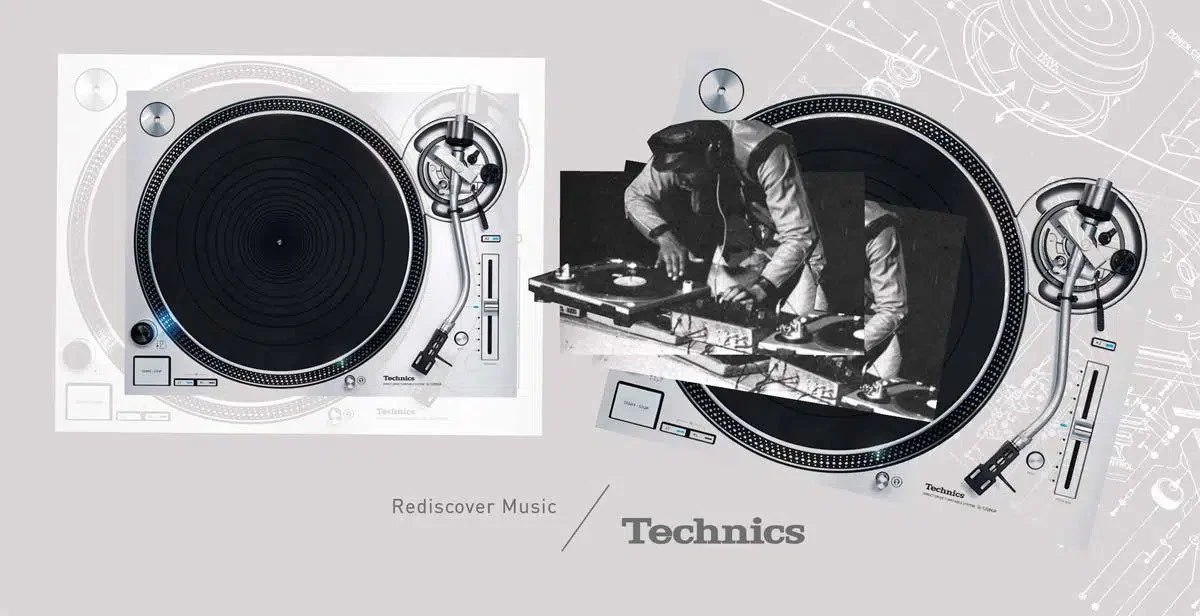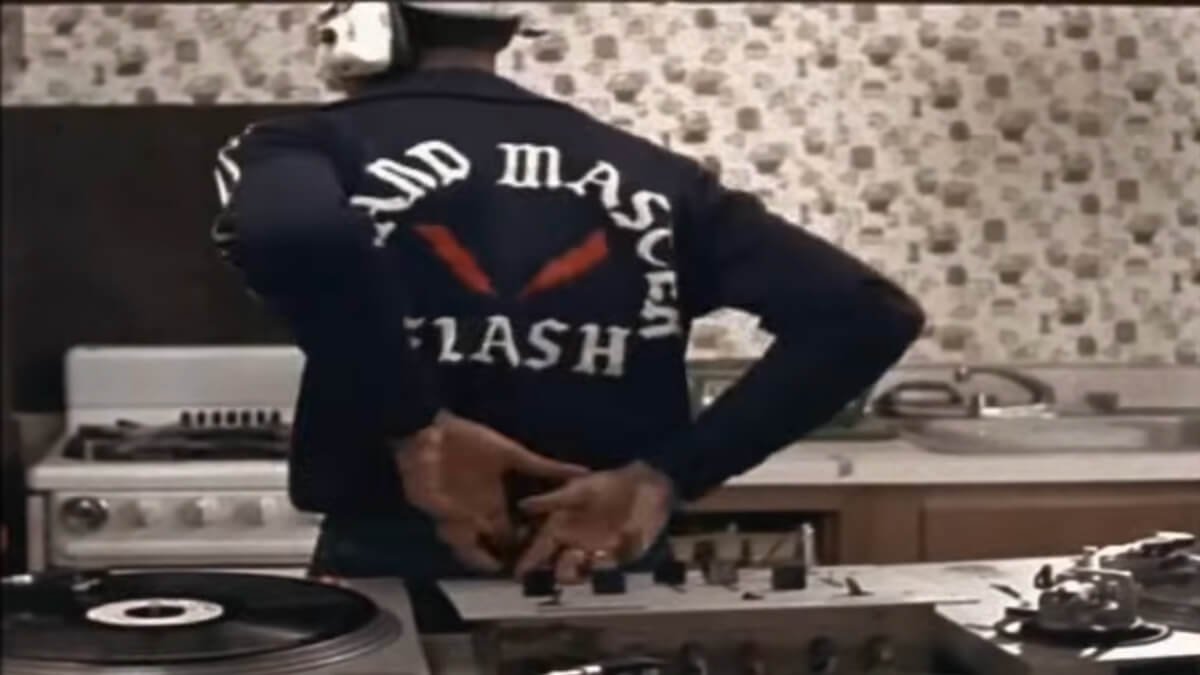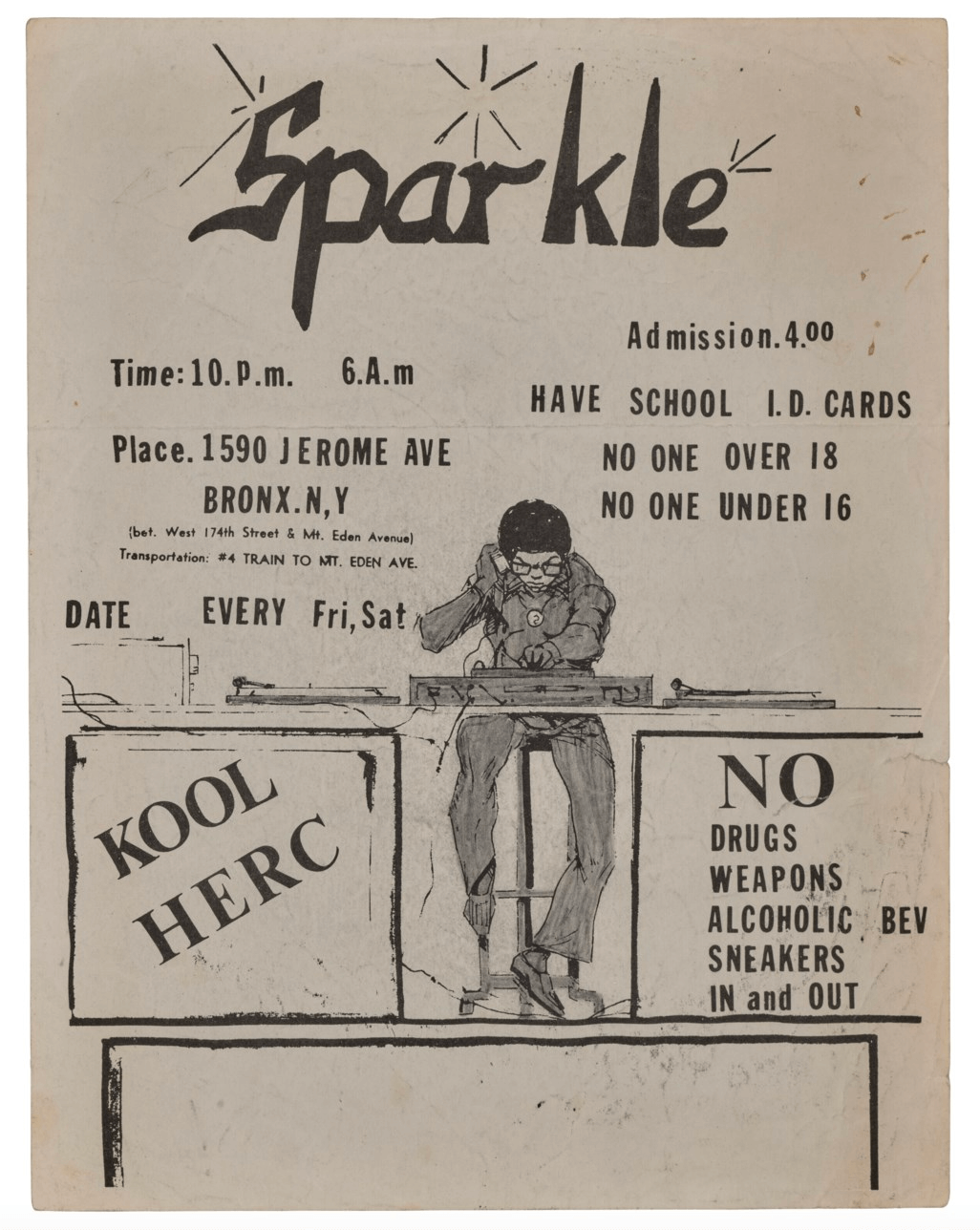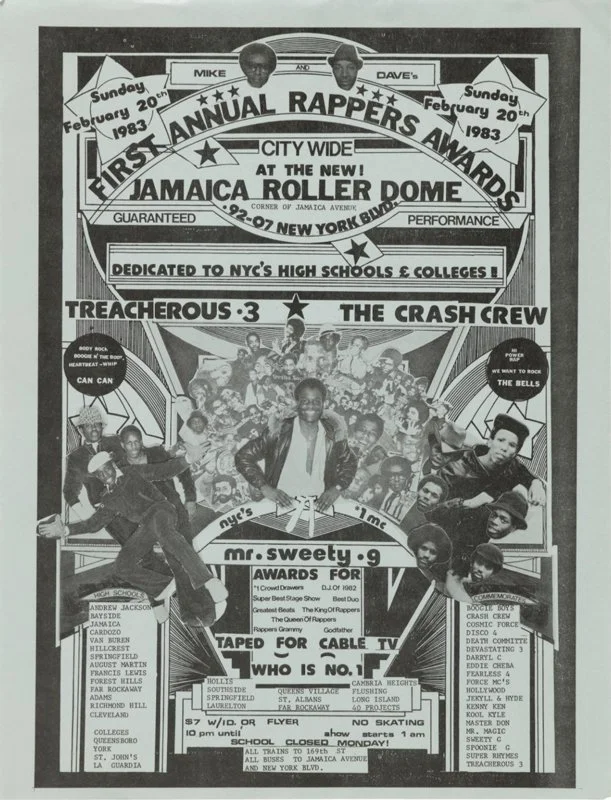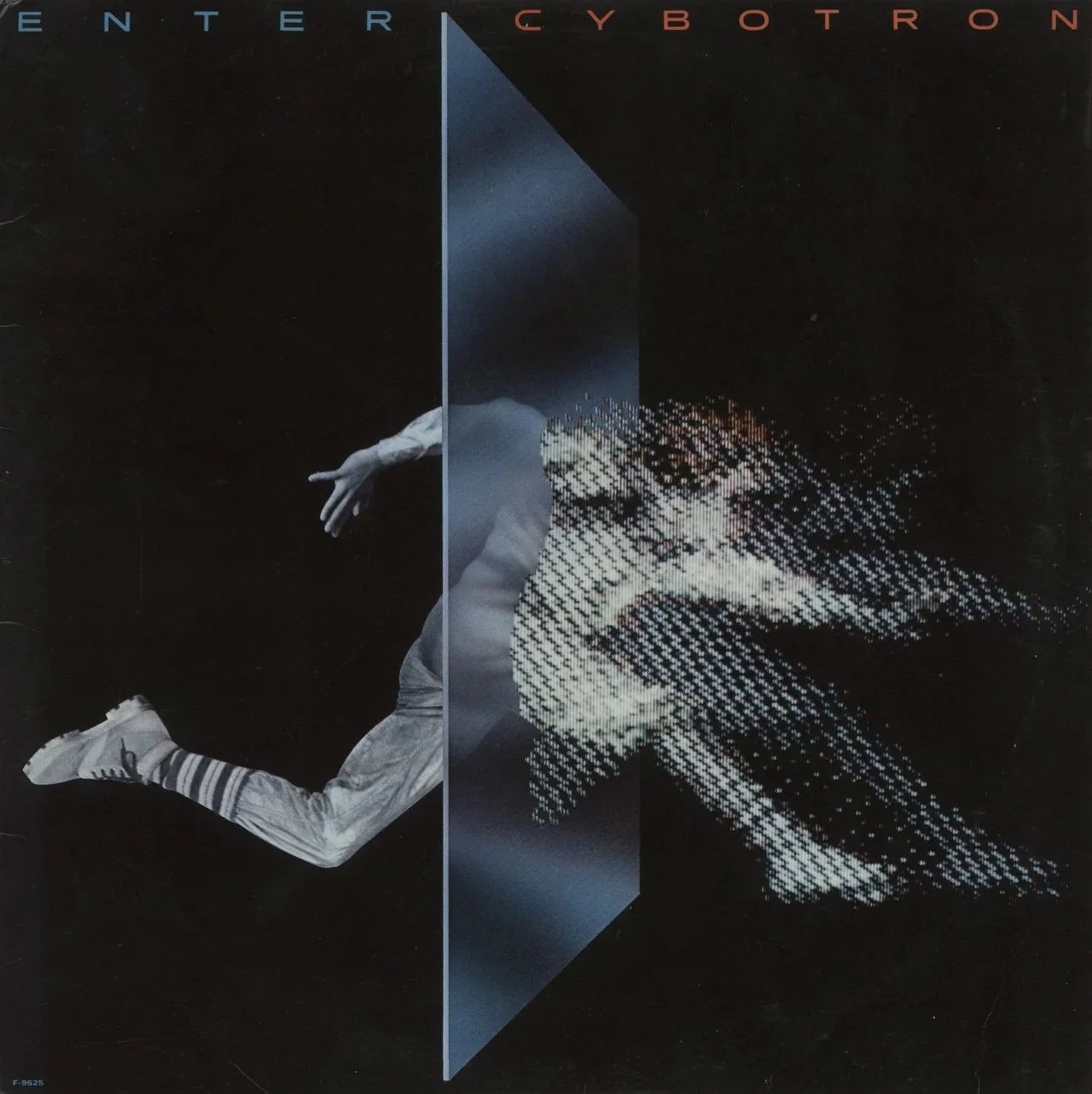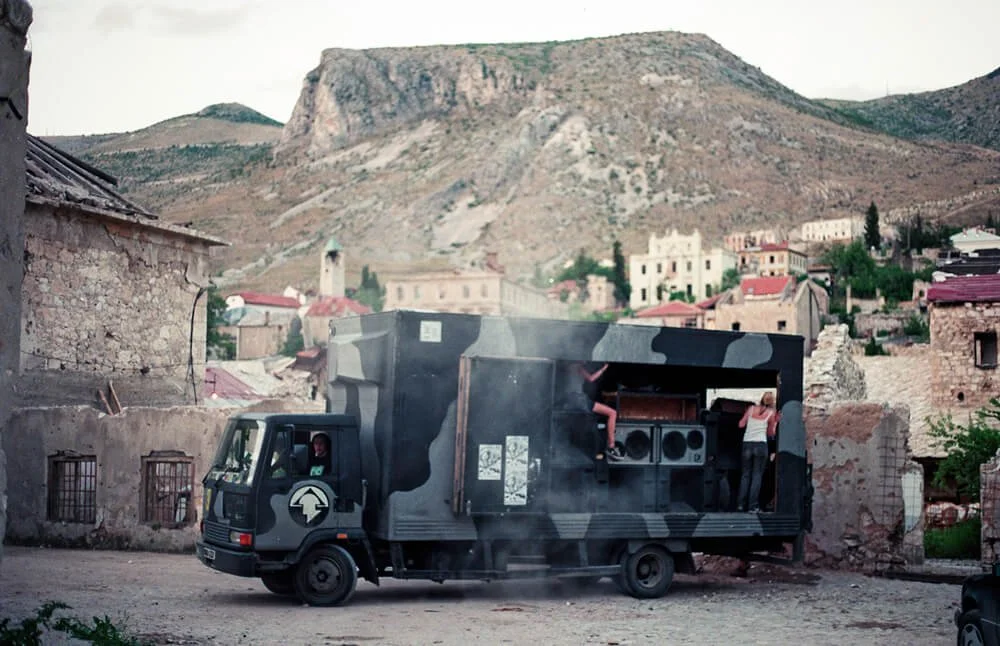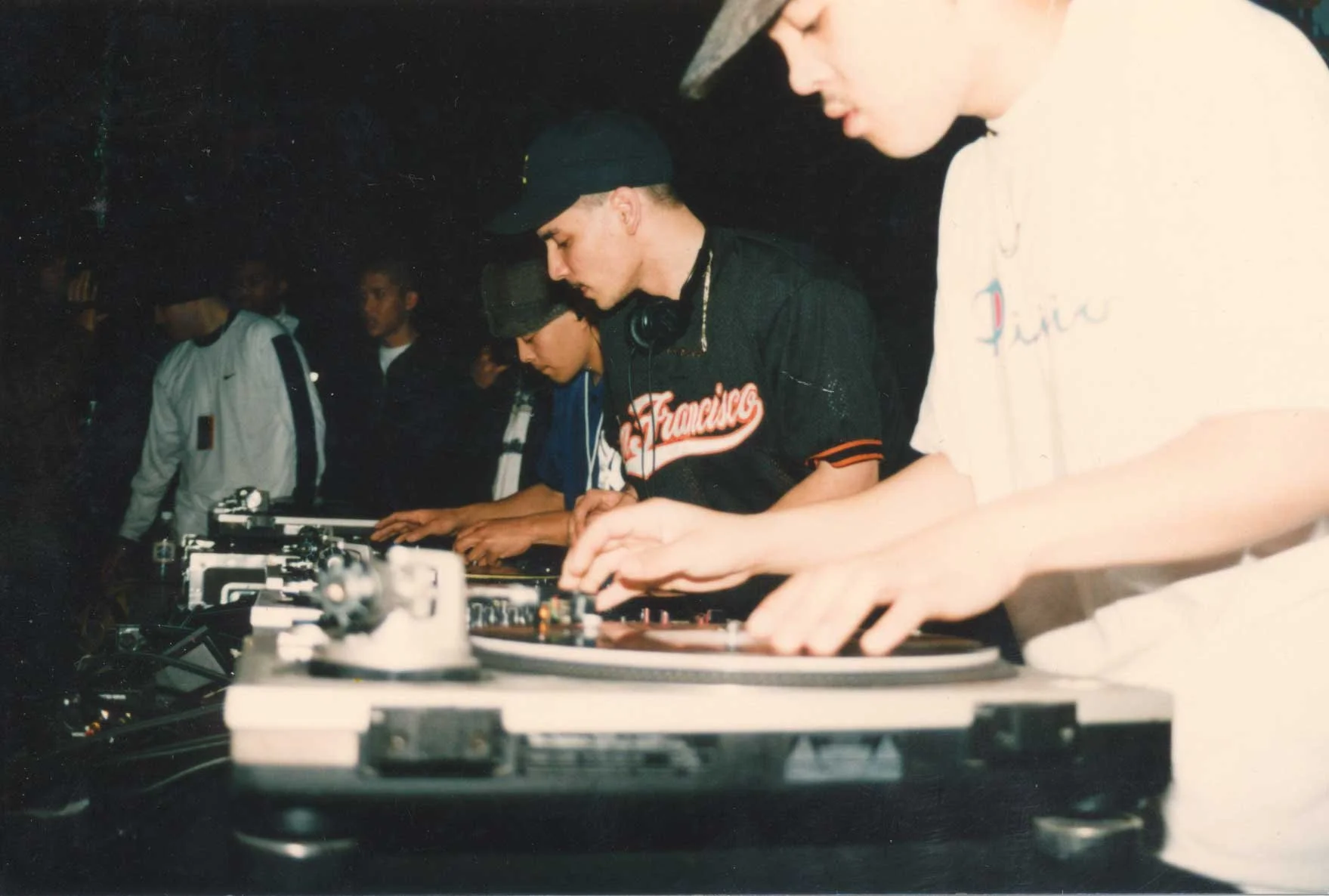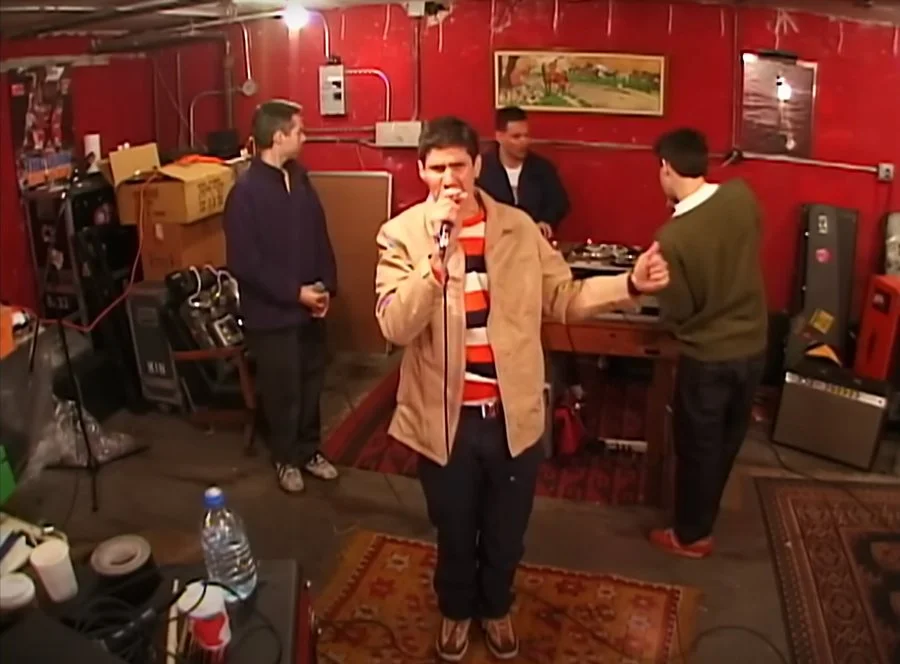Technics SL-1200s: How Two Turntables Revolutionised Music – From Bronx Block Parties to Jungle
"Please be a set of 1210s. Please be a set of 1210s…" This was my mantra every time I stepped into a deejay booth – because when you found them, you knew the night was going to be special.
Before the sampler, there was the turntable, specifically the Technics SL-1200. From the New York Bronx block parties of the 1970s to the basements of Bristol in the 1990s, the silver 1200 and its black twin, the 1210, became the heartbeat of hip-hop, the foundation of turntablism, and an essential tool in electronic dance and underground music culture.
Made in Japan - Precision Engineering
First released in 1972 by Matsushita (now Panasonic), the Technics SL-1200 was originally created for audiophiles. But with its direct-drive motor, pitch control, and vibration-resistant design, it quickly became the must-have for DJs who needed durability, power, and precision.
The original 1210s were legendary for their resilience. They took all sorts of abuse: pennies stacked up on the headshell forcing the needle into the grooves of the vinyl; drinks got spilt over them; Dean and I once watched in horror as one of DJ Shadow's turntables took the full weight of a Jungle Brother, as he clambered on top of it mid-set and proceeded to do the twist! These things were built like a tank - they were bombproof.
Technics developed the SL-1200 MK2 - specifically for deejays, 1979
The Bronx: Where Hip-Hop Was Born
In the South Bronx, DJs like Kool Herc and Afrika Bambaataa used a precursor of the 1200s, the SL-1100, for their parties. By extending instrumental breakbeats of obscure funk & soul records, they transformed them into the rhythmic backbone of the music and, in doing so, gave birth to a new movement: hip-hop.
Grandmaster Flash "The Adventures of Grandmaster Flash on the Wheels of Steel" pioneered the use of cutting and backspinning techniques made possible thanks to the torque and responsiveness of the Technics.
He essentially turned the turntable into an instrument.
This musical revolution fed back into the Technics design team in Japan, and they started incorporating changes that would help the deejays.
"DJs create grooves by matching the BPM of songs with different tempos. To make their play easier, the Technics team increased the variable range of the pitch control and changed the control from a knob to a vertical fader, which greatly improved operability. In addition, DJs need to be able to accurately move and reposition the tonearm to drop back into the music with incredible precision. The team developed a new tonearm that was balanced like a high-precision scale and could be fine-tuned to suit the needs of DJs.”
By the mid-1980s, the turntable was no longer just a playback device. With the rise of sampling, DJs like Eric B, DJ Premier, and Marley Marl used 1200s to sample vinyl for loops and breaks that formed the basis of classic hip-hop tunes. Watch any hip-hop video from the early 90s by A Tribe Called Quest, Public Enemy or De La Soul and you'll see a pair of the iconic silver 1200s in there. They even featured in last year’s video for Kendrick Lamar’s “Not Like Us”.
Kool Herc “Back to School” jams in Cedar Park, The Bronx, 1974
Grandmaster Flash showing off his skills in Wild Style, 1982
Grand Mixer DST on turntables, Donald D, DJ Kool Herc. Bronx River Center, 1983
D.I.Y flyers for New York hip-hop parties (1974-78)
Futura 2000’s “Break” - the first abstract car, 1980
Hip-Hop is something you live
The 1210s weren't just tools for DJs – they were central to hip-hop's four fundamental elements: MCing, DJing, breaking, and graffiti writing. This culture was captured in groundbreaking films like Wild Style (1982), which showcased the raw energy of the South Bronx scene, and Style Wars (1983), a documentary that brought the underground world of subway graffiti and hip-hop to mainstream audiences. Dialogue from these films were sampled by hip-hop artists like the Beastie Boys & DJ Muggs of Cypress Hill, "A to the K? …".
The connection between the turntables and visual art can’t be understated. Graffiti writers would tag their names on subway cars, DJs with the same crews would represent on the decks, and they would be breakdancing too. Style Wars featured writers like SEEN, DONDI, and FUTURA 2000. Later, the documentary Scratch (2001) would chronicle the evolution of turntablism, showing how the 1200s had transformed from a simple playback device into a legitimate musical instrument. The film featured legends like Grand Wizzard Theodore (inventor of the scratch), Mixmaster Mike, and DJ Shadow, all demonstrating the creative possibilities that emerged from two turntables and a mixer. I first became aware of scratching while listening to ‘Rockit’ by Herbie Hancock. Those simple back-and-forth scratches were executed by Grand Mixer DST. “My approach to the turntables was to look at the turntable as a cuíca (a Brazilian drum), you know, a percussion instrument,” he says.
Wild Style - brought hip-hop culture to the masses, 1982
Beastie Boys backstage after a gig, 1983 ©Sophie Bramly
Electronic Music Pioneers
The 1210s became equally crucial to electronic music's evolution across multiple genres in the US, Europe & Japan.
Detroit Techno Revolution
In Detroit, the "Belleville Three"—Juan Atkins, Derrick May, and Kevin Saunderson—influenced by the electro beats of Kraftwerk, used the SL-1210s to develop techno in the late 80s and early 90s. The Technics' precise BPM control was perfect for techno's rigid 4/4 structure, while their durability suited marathon underground warehouse sets. Jeff Mills became legendary for his three-deck mixing style using 1210s. The mechanical precision of the turntables matched techno's machine-like rhythms, creating a perfect synergy between tool and genre.
World Techno Tribe
As techno spread to the UK, Germany, and Japan, the 1210s remained the standard. Berlin's techno scene in the early 90s, with its epicentre at the nightclub Tresor, the UK soundsystems like Spiral Tribe & Desert Storm, and the Japanese underground, with the likes of Ken Ishii, all relied on these turntables. The extended pitch control allowed for creative tempo manipulation, while the deep, punchy bass response perfectly suited techno's kick-heavy sound.
Clear by Cybotron (Juan Atkins), 1983 - taking electro into the future
Desert Storm Soundsystem on a peace mission to Sajavero, 1995
Hip-Hop’s Influence on Fashion & Art
New York's creative landscape was transformed as hip-hop, graffiti art, and downtown gallery culture converged. Artists like Jean-Michel Basquiat and Keith Haring brought street culture into galleries, while hip-hop began reshaping fashion.
Run-DMC championed Adidas, wearing their Superstars without laces and with tongues hanging out—even dedicating a song to them - "My Adidas". Other brands like Nike, Fila, and Kangol bucket hats (essential for breakdancing headspins) became part of hip-hop's uniform.
This influence crossed to Britain, where the culture was embraced wholeheartedly. 3D from The Wild Bunch was a graf writer, along with Goldie, the jungle and drum & bass pioneer. Goldie embodied the fusion of American streetwear and British underground music and was always wearing Stussy. He would play dubplates of new tunes at Metalheadz nights at Blue Note in Hoxton, rocking the latest tees.
Run DMC - “My Adidas” - a branding dream, 1986
Jean-Michel Basquiat, Futura 2000 & Fab Five Freddy, 1981 ©Andre Grossman
British Music Culture
In the UK, the Technics 1210 became the industry standard for DJs. Whether it was pirate radio stations like Kiss FM, illegally broadcasting from London tower blocks, warehouse raves, and early hip-hop crews in community centres like the Wild Bunch attended in Bristol, they all relied on its rock-solid design. I loved using them because of the strobed platter edge – not only was it hypnotic, it allowed you to check if the record had got up to speed, so you could beat-match perfectly.
In Bristol, the 1210 played a central role in forging a new genre. DJ Milo and The Wild Bunch (later Massive Attack) used their Technics to blend soul, reggae, and electro in innovative sets that laid the groundwork for others who embodied the Bristol sound like Tricky and Portishead, who weaved moody, cinematic textures from vinyl samples.
On a technical level, the bass output from those original 1210s was incredible. If you've ever stood in front of the speaker stacks in the back room of Fabric listening to deejays Fabio & Grooverider, then you can attest to how good it was. The deep, detailed bass became the foundation of hardcore, jungle, drum & bass, and later dubstep – genres that couldn't exist without that low-end power.
The Wild Bunch, Bristol, 1985 ©Beezer
Milo, Daddy G, Nellee Hooper, Willie Wee, & 3D at Dug Out, Bristol, 1984 © Beezer
Turntablism and the DMC Champs
In 1985, the DMC World DJ Championships were born, elevating the turntable to the status of a musical instrument. With two 1200s and a mixer, DJs like Qbert, Mix Master Mike, and Craze reinvented the rules—beat juggling, scratching, and body tricks became forms of musical expression. They turned the turntable into a musical instrument, and the 1200 was their Stradivarius.
The British took to turntablism with characteristic obsession. DJs like DJ Yoda, Prime Cuts, and Mr. Thing pushed the boundaries of what was possible even further.
Invisibl Skratch Picklz - the all-star turntablism crew
The Beastie Boys with Mix Master Mike in “Three MC's and One DJ” video, 1998
The Tech That Shaped Culture
The precision of the 1210s wasn't just about being perfect pitch – it was about cultural expression. The SL-1200G and newer models maintain that legacy with twin-rotor drives and lightning-fast startup times (0.7 seconds to full speed), but the original 1210s had something special. Their stability means you can hear melodies, harmonies and rhythms more easily. Percussive tracks sounded incredible – the kicks pop with authority.
Q-TIP from A Tribe Called Quest mining for samples ©Al Pereira
Legacy of a Legend
Though discontinued in 2010, public demand brought the 1200 back in 2016 with updated models like the SL-1200G and MK7. Despite digital revolutions, the 1200 remains a fixture in clubs, battles, and for collectors.
The original Technics were mass-produced but were "high quality with consistency and outstanding value." They represented something pure about music culture – before algorithms, before Spotify playlists, when DJs were cultural curators who shaped entire movements through their selection & skills.
More than just a turntable, the Technics SL-1210 shaped how music was made, shared, and experienced in Britain. It symbolised authenticity, gave birth to subcultures, and crossed social boundaries. From the Bronx to Bristol, from junglists to trip-hop pioneers, from the fashion of the rave scene to the look & feel of hip-hop – the Technics 1210 didn't just play music. They were an essential part of our culture.
If you want to hear more. Bring your favourite vinyl to our North London listening room and hear how the latest range of Technics turntables bring the noise!
The Technics SL-1200G - home listening for hip-hop heads
Velocity Press Book Launch Event
- Thurs. 18th September 2025
Love hip-hop? Then join us for this deejay set & book launch!
Dan Lish - Egostrip Book 2
Egostrip Book 2 is a beautifully designed, expansive continuation of Dan Lish’s visionary character illustrations that pay homage to the vibrant world of Hip Hop and beyond. This stunning collection features over 170 illustrations, paintings, and murals that capture the essence of Hip Hop’s golden era through striking visual narratives.
The artwork honours legendary artists and collectives such as Gang Starr, Run DMC, Wu-Tang Clan, Boogie Down Productions, A Tribe Called Quest, MF DOOM and many more.
Ben Pedroche - Independent As F***
Independent As F**: Underground Hip-hop from 1995-2005 explores how a generation of rap artists rebelled against the major record labels and made music on their own terms, celebrating individuality and creative freedom. It also traces the history of some of hip-hop’s most respected artists, including MF DOOM, El-P, Mos Def, Kool Keith, and Madlib.
“Ben is an archivist of the highest regard. His Grown Up Rap pushes the myth and mythology aside for real powerful hip hop facts.” Chuck D
Q&A and DJ Set - 6pm - 9pm
Soundstage Hi-Fi, 8 Heddon Court Parade, Cockfosters Rd, London, EN40DB
Eric B & Rakim by Dan Lish
Eric B & Rakim - “Follow the Leader” LP, 1988

